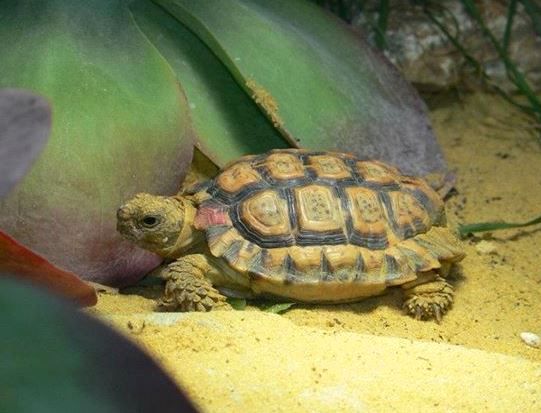Table of Contents
When any type of pet refuses to eat, it is going to be worrying time for the owner, especially as a loss of appetite can often be the first symptom of an underlying health issue. If your tortoise has stopped eating, it is important to identify the cause of the problem as soon as possible to ensure its good health and wellbeing.
What new tortoise owners should be aware of is that there are many reasons why these creatures stop eating. While it is easy to just assume that illness is the cause, it is not the only reason for a refusal to eat. In fact, it may be down to something as simple as a less than perfect environment.
When their shelled pet refuses to eat, many tortoise owners start offering a variety of foods in the hopes that theirs will just start eating again. Nevertheless, it is important to try to find the reason for the loss of appetite. If this can be done as quickly as possible, you might be able to get your tortoise back to normal.
What Do Tortoises Eat and How Often?
Before stressing out too much about your tortoise’s lack of appetite though, it is probably a good idea to have a real understanding of what is normal in terms of eating when it comes to these reptiles. Tortoises are plant eaters and in the wild eat a variety of plants. They typically enjoy wildflowers and weeds such as hibiscus, lamb’s lettuce, mulberry, and cat’s ears. In fact, they will feed on hundreds of different plants in a year so creating the same type of diet in captivity can pose some problems. It is important to avoid feeding it just one type of plant and instead concentrate on providing as much variety as possible.
are plant eaters and in the wild eat a variety of plants. They typically enjoy wildflowers and weeds such as hibiscus, lamb’s lettuce, mulberry, and cat’s ears. In fact, they will feed on hundreds of different plants in a year so creating the same type of diet in captivity can pose some problems. It is important to avoid feeding it just one type of plant and instead concentrate on providing as much variety as possible.
There may be a temptation to offer things like fruit, salad items, and vegetables, but it is important to do your research before offering such items. Although tortoises love fruit and will readily accept it, it is not recommended as a regular diet source as their digestive systems are not designed to eat fruit.
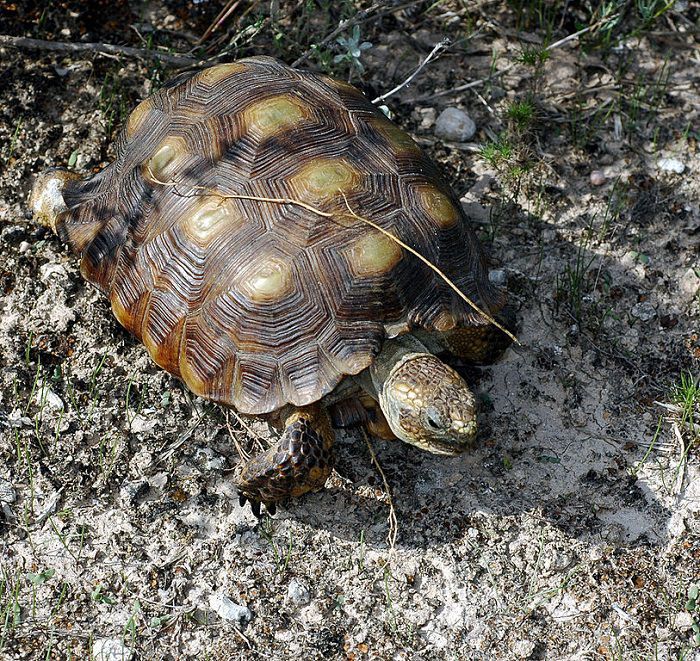
Texas Tortoise 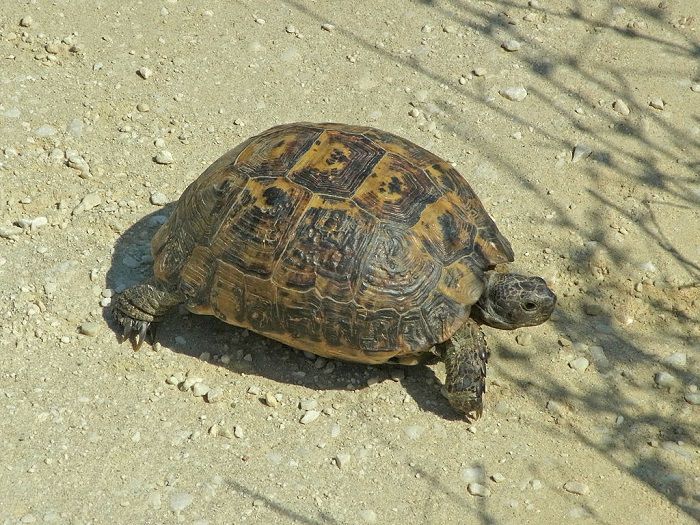
Spur-Thighed Tortoise 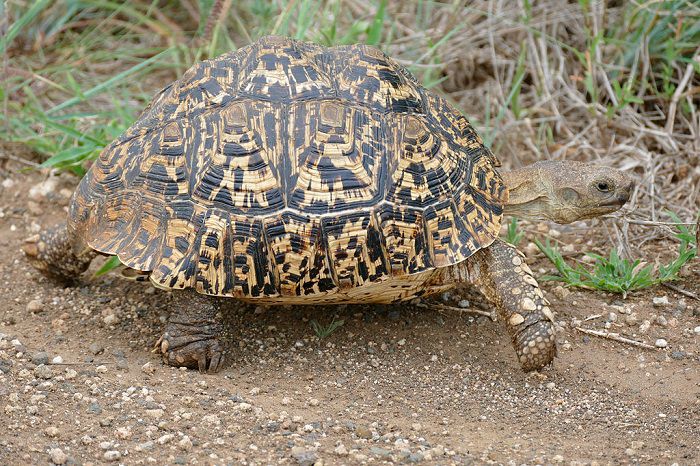
Leopard Tortoise
Salad items such as lettuce are also not recommended as they do not contain much fiber and have very little nutritional value. These items tend to pass through the tortoise’s digestive system very quickly, leading to loose stools. It is best to avoid vegetables high in carbohydrates as well, including parsnips and carrots. Even dark leafy greens such as cabbage should not be fed exclusively as these contain goitrogens, which could affect the thyroid and eventually lead to kidney and liver damage.
What to feed your pet tortoise depends on the species. Some species prefer to eat grass and weeds while others only eat a small amount of grass. You can try things such as strawberry and raspberry leaves as well as parsley, artichoke, and oregano.
Now that you have an idea about the type of food a tortoise should be eating, it is important to know how much you should be feeding it. What many people do not realize is that tortoises in the wild usually have to travel great distances to find their food, particularly those that hail from hot, dry parts of the world. In captivity, tortoises are often overfed, which can lead to rapid growth and deformity with their shell.
If your tortoise is kept outdoors and is munching on the grass on your lawn or on plants in your yard, then it will graze away by itself. However, if your tortoise is kept indoors or in a pen without access to plants and grass, you will need to provide food. Many owners offer food once per day, with two fasting days in a week. The fasting days allow the tortoise’s slow digestive system to catch up and to avoid a period of self-starvation during the summer months. Other owners prefer to provide lesser amounts of food a few times each day, allowing their pet to graze slowly.
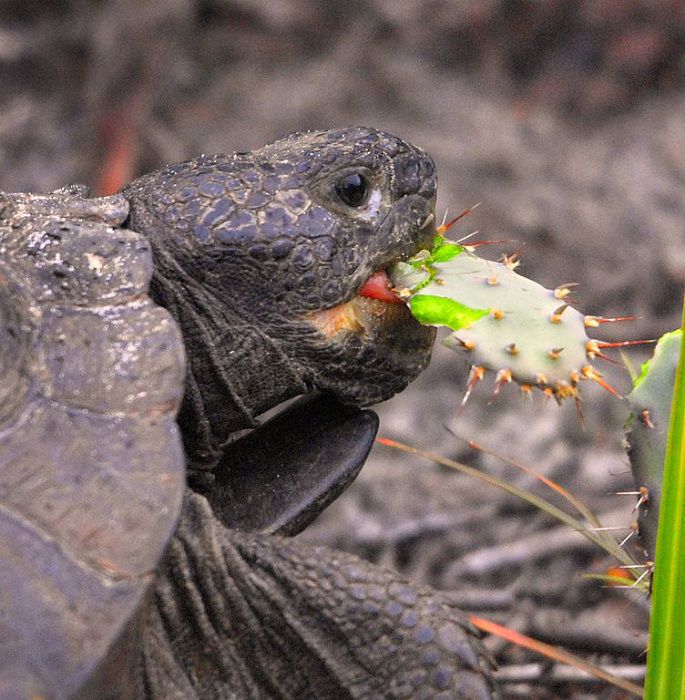
Gopher Tortoise 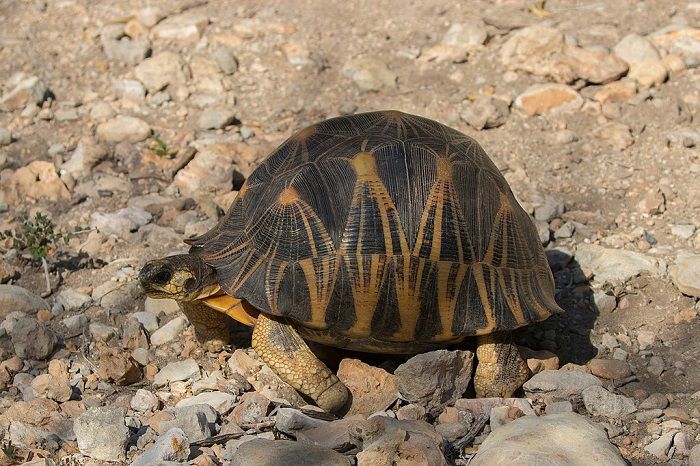
Radiated Tortoise 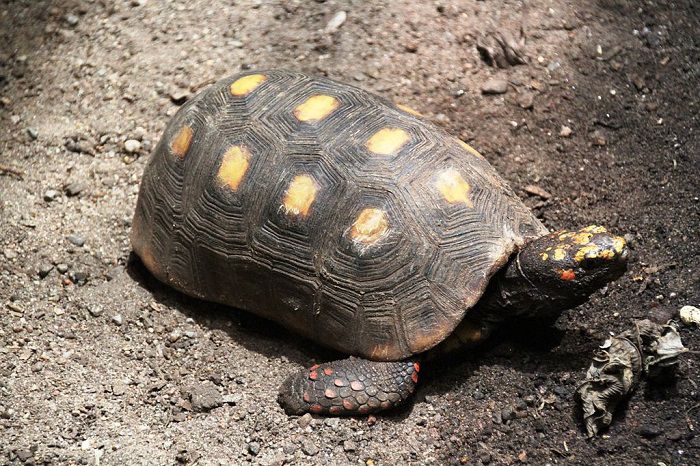
Red-Footed Tortoise
What Can Cause a Loss of Appetite
With all the information about what foods are right for your tortoise and how often it should be eating at your disposal, it will be much easier for you to identify a problem should it occur. If your pet has been eating normally and then starts to eat less or stops eating completely, you will need to find out why as soon as possible.
Check the Temperature
The first thing to check is the tortoise’s immediate environment as heating and lighting can be a factor in how comfortable the creature is. As a reptile, tortoises are cold-blooded, meaning they cannot generate their own body heat. They can only get as warm as the environment they are in. It is therefore important that you create an environment that is as close to their natural habitat as you can. In terms of heat, this can be done artificially with a heat lamp. If you’re interested, Amazon stocks a good range of heat lamps. Click here to find out more (opens in a new tab).
to find out more (opens in a new tab).
Most tortoises are comfortable in temperatures between 68F and 80F. Nonetheless, you will need to create a temperature gradient within its enclosure. This means that one side of the enclosure is warmer than the other. Tortoises like to bask in the heat but will also retreat to a cooler side if they get too hot. The basking area of the enclosure needs to be between 90F and 100F (but this depends on the species, so do you research).
If temperatures are too low, your tortoise might begin to conserve energy by moving less and not eating.
Incorrect Lighting
As discussed above, your tortoise requires specific temperatures that mimic its natural environment, but it is also important to ensure the lighting is correct too. It is not sufficient to just provide a normal light, though. You must provide a bulb that emits UV light. Tortoises require UVA light to encourage normal behavior while UVB light ensured the creature can produce vitamin D, which it required for heathy bones.
Your tortoise will need around 10-14 hours of UV light each day to thrive if it is kept in an indoor enclosure. You can reduce this amount if your pet has access to natural sunlight outside. UV light is particularly important as, without it, your tortoise could become less active and lose its appetite. UV bulbs can be purchased from a local pet store or online. Before you buy however, it is worth checking that the bulb provides both UVA and UVB light. Here is a selection on Amazon .
.
Picky Eater
It might simply be the case that your tortoise does not like the food you are offering. Even if your pet has been happily munching a certain type of food for some time but has now stopped eating it, it is worth considering the possibility that it has just gone off it. If your tortoise is not eating but is still active, try offering a different type of food to see if that helps.
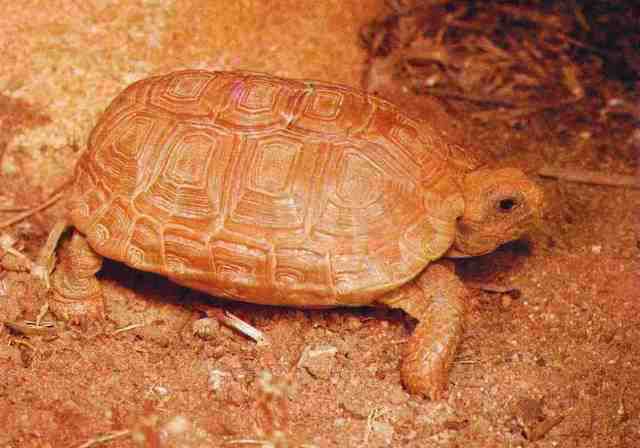
Boulenger’s Cape Tortoise 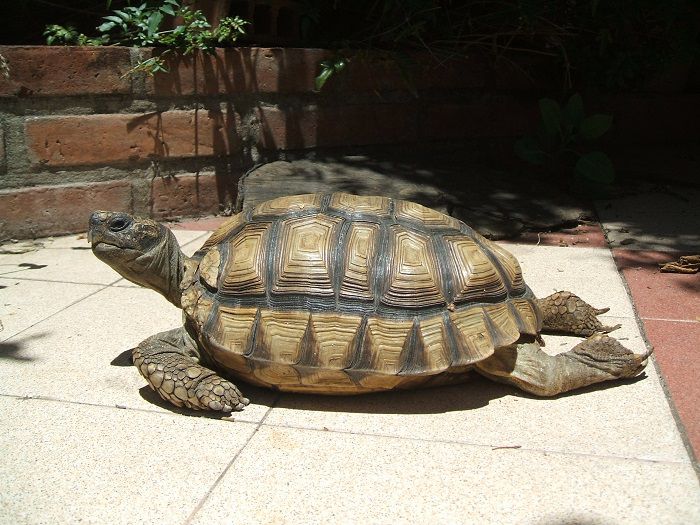
Chaco Tortoise 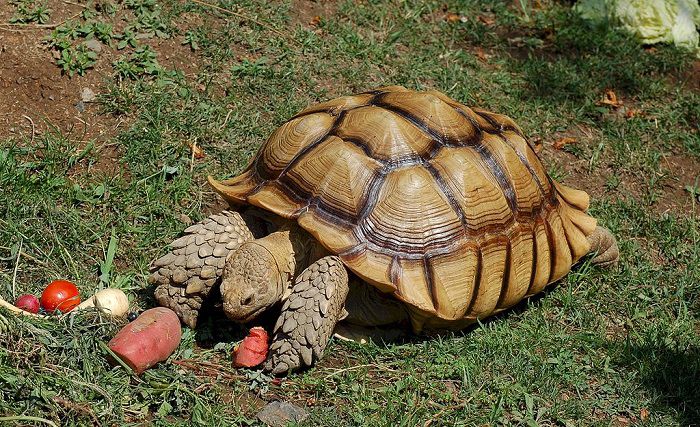
African Spurred Tortoise
Hibernation
It is natural for tortoises to hibernate and even those that are kept in the perfect captive environment may still need this period of inactivity. During hibernation tortoises slow down their heart rate and breathing to conserve energy. It is normal for them to stop eating during this period.
Your pet might also show very little interest in eating when it first emerges from hibernation. Tortoises might need a few days to fully rehydrate before eating again. Try offering water-based foods at this time as your tortoise is more likely to find them appealing.
Illness
If you have checked everything in your tortoise’s environment and all is as it should be, and you have offered different foods, but to no avail, it might be time to consider that illness is the reason for the loss of appetite.
As already mentioned, loss of appetite is often the first symptom of illness, but it is rarely the only one. Look for other symptoms such as:
- weight loss
- skin discoloration
- swollen eyes
- abnormal stools
- runny nose.
If you do notice any of these symptoms, it is best to contact your vet for advice as soon as possible. Tortoises can be affected by a variety of illnesses and infections, so it is worth getting it checked out by a professional as soon as possible.
I recommend speaking to your vet if you are at all worried about your pet’s lack of appetite. Even if you cannot spot any other symptoms, talking to a professional could help you identify reasons why the tortoise is not eating.
Photo Credits:
- Featured Image (Speckled Cape Tortoise): Abu Shawka – CC BY-SA 3.0

- Texas Tortoise: Clinton & Charles Robertson
 – CC BY-SA 2.0
– CC BY-SA 2.0
- Spur-Thighed Tortoise: Donkey shot
 – CC BY-SA 3.0
– CC BY-SA 3.0
- Leopard Tortoise: Bernard DUPONT
 – CC BY-SA 2.0
– CC BY-SA 2.0
- Gopher Tortoise: Andrea Westmoreland – CC BY-SA 2.0

- Radiated Tortoise: Charles James Sharp
 – CC BY-SA 4.0
– CC BY-SA 4.0
- Red-Footed Tortoise: Bjoertvedt
 – CC BY-SA 3.0
– CC BY-SA 3.0
- Boulenger’s Cape Tortoise: Abu Shawka – public domain
- Chaco Tortoise: Arteivanna – CC BY-SA 4.0

- African Spurred Tortoise: Melissa Mitchell
 – CC BY-SA 3.0
– CC BY-SA 3.0

